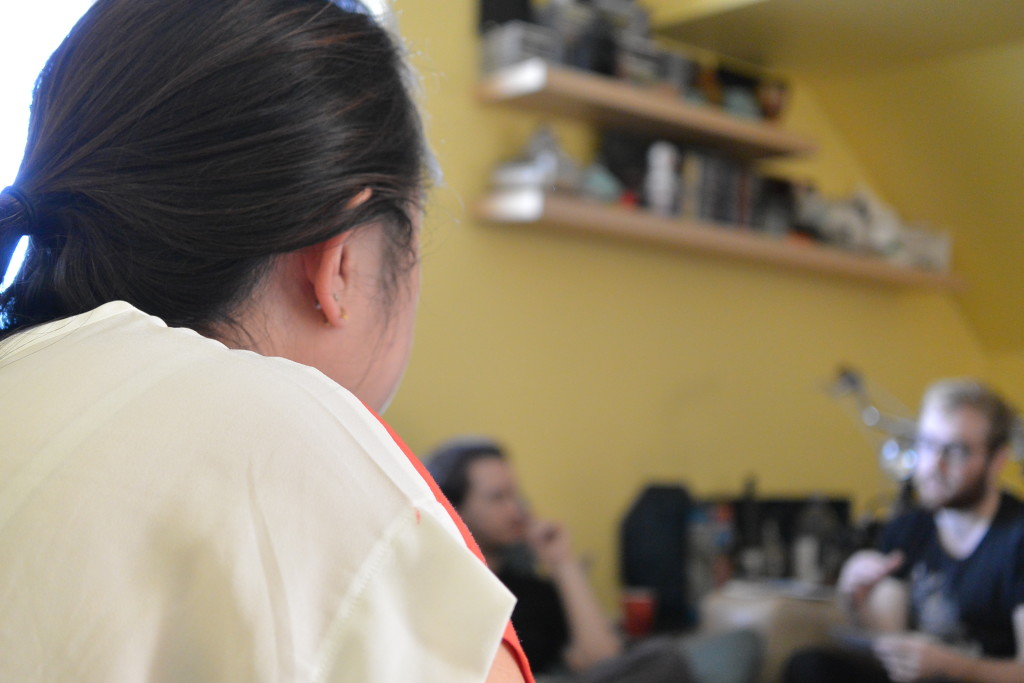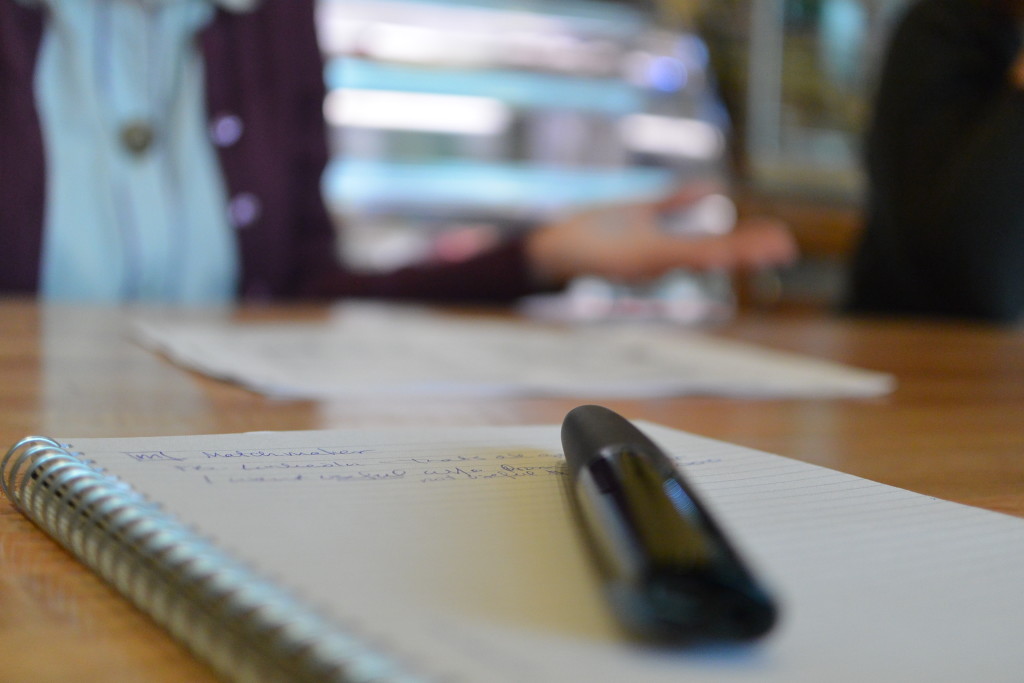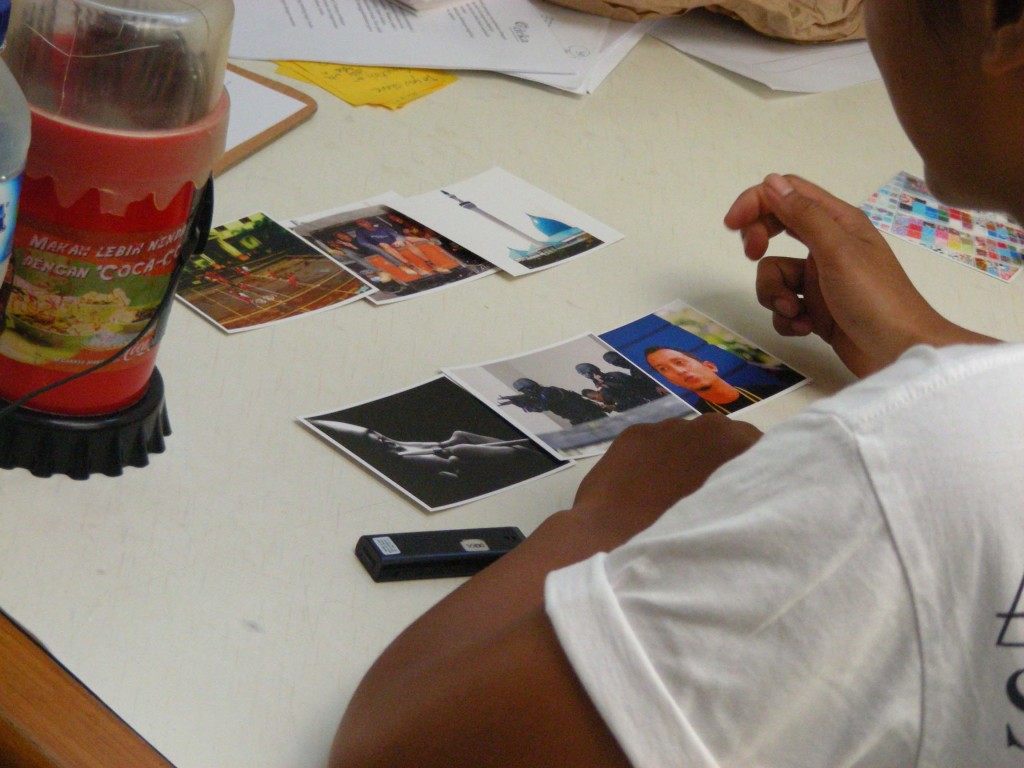Category: Interviewing
We have 3 favorite tools that help us collect great stories and build more beautiful presentations in the end:
– LiveScribe Pen: This pen captures audio and uses special paper to link the audio to whatever is written at that moment in time. We use this to be sure that we capture exact quotes. It’s especially useful to use when shadowing someone during an ethnographic observation– where you might be wandering through the mall or sitting quietly in their home all day. You can leave the pen running all day, capturing any small bits of conversation without turning a recorder on and off.

Our favorite camera allows us to take more dynamic photos, with strong focus contrast between foreground and background
– Lumix Gx7 Camera. This camera takes great photos in low-light (essential for in-home interviews) and has a touch-screen interface that allows you to touch the screen to indicate where to focus the lens. This helps us capture dynamic photos that focus on the objects or people that are most interesting.
– Photo Card Sort. Years ago I created an InDesign document with photographs sourced from as many different terms I could think of to type into Flickr and pull from my own persona photos. I focused on amorphous, non-concrete words like “communication” “spirit” “inspiration” to lead me to photos that could be interpreted not for the object they represented but what they could symbolize to people. We’ve used it again and again to prompt conversation. It works for several reasons:
- It gives people something to look at besides the person interviewing them.
- Beautiful photos encourage them to be creative.
- Asking them to describe opposites shows the facets of an experience. For example it was very revealing when we asked, “Choose three cards that describe how you like to communicate and three that describe how you don’t like to communicate.”
- The limited set of responses forces them to think about different aspects of their experience, they have to reflect on their feelings and the photos. Sometimes it’s a stretch, and they admit that, but it’s still interesting. We are looking for inspiration here, and this helps.
Contact us if you would like a PDF copy of these cards.
What tools do you love when you are seeking inspiration from field research?
Participatory Design acknowledges that we, as design researchers, are not seeking truth. What we gain from our interactions with participants is biased toward the questions we need to answer. The ideas that spark innovation and that are most inspiring to us as people who are intending to solve a problem—can come from many places.
With that in mind, Brendon Clark inspired me with the ways in which he has been exploring the boundaries of how much control he can give to others when he works with users and stakeholders in the field. Yesterday, in a chat with Brendon, a great influence of Participatory Design thinking for me, I realized myself how little control I give to those around me. He asked why.
“I… am trying to preserve the accuracy.”
Yet I have always acknowledged that the purpose of my approach is inspiration. When people ask me how I can stuffy only 6 people, I tell them that it only takes one clarifying story to change everything.
If I gave up some control to the designers and product managers in the field with me—to allow them to pursue the topics of the conversation that are most interesting—mightn’t we all be more inspired?
And the Participatory Design movement in Scandinavian, which I admire so much, has always been about bringing the user into the conversation as a equal participant. Easier heard than acted upon, apparently.
I see now how I tend to keep users in the dark during my field sessions—trying not to bias them by telling them what I want to know, or what I find most interesting. I remain neutral in the conversation– open and supportive– but still neutral, holding my card sort close to my chest, so to speak.
Brendon has been studying and writing about Performance as a way to put participants at the center of the conversation for innovation and design. He began his work, at the intersection of Anthropology and Participatory Design, with a focus on users and is now expanding his work to include stakeholders as participants as well. He says, “When you give people a stage, they naturally perform.” He sees our role as researchers as the people who create the stage.


